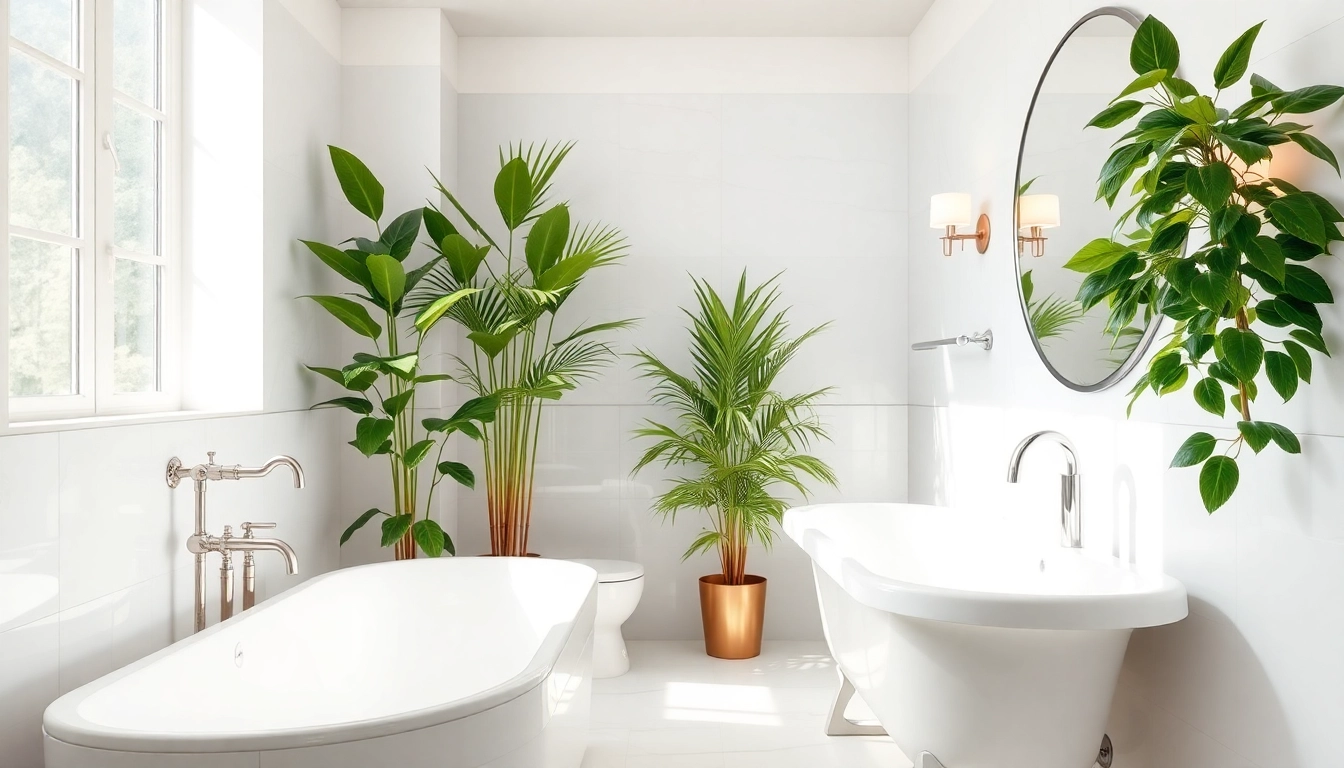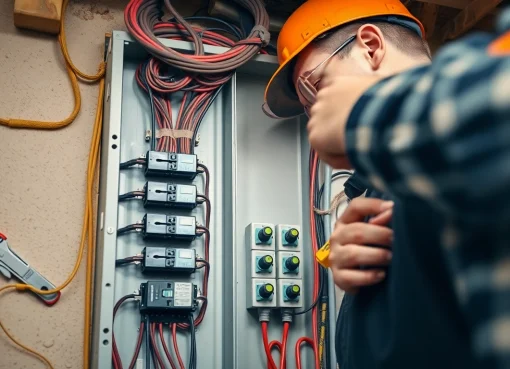Top 5 Essential Tips for Your Bathroom Reno to Enhance Style and Functionality

Understanding Your Bathroom Reno Needs
Embarking on a bathroom renovation (or bathroom reno) is an exciting journey that transforms one of the key spaces in your home. However, before you break ground, it’s crucial to clearly understand your needs. This involves assessing functional requirements, setting a realistic budget, and selecting an aesthetic design style that reflects your personality and complements the rest of your home.
Identifying Functional Requirements
Before diving into your renovation, identify how you use your bathroom. Consider the following:
- Daily Routines: How many people use the bathroom daily? Is it limited to essential functions like showering and using the toilet, or does it serve as a space for relaxation?
- Features Needed: Do you need additional features such as a double vanity, adequate storage, or a separate shower and tub?
- Accessibility: Will the bathroom need to accommodate any accessibility requirements for family members or future guests?
Creating a list of essential features will guide the design process and help you prioritize changes that enhance both utility and convenience.
Setting a Realistic Budget
A sensible budget is the cornerstone of a successful bathroom renovation. Start with a comprehensive review of all potential costs involved:
- Materials: From tiles to countertops, your choice of materials will significantly impact your budget.
- Labor: If hiring contractors, research labor costs in your area to ensure you allocate properly.
- Unexpected Expenses: Set aside an additional 10-20% for unforeseen issues such as plumbing problems or structural repairs.
Consulting with renovation professionals can also provide a clearer picture of realistic costing based on your specified requirements and selected features.
Choosing the Right Design Style
Your bathroom’s design should reflect both your style and the overall aesthetic of your home. Consider popular trends such as:
- Modern: Characterized by clean lines, minimal ornamentation, and a neutral color palette.
- Traditional: Features intricate details and elegant fixtures, often utilizing classic materials like marble.
- Rustic: Incorporates natural materials like wood and stone, exuding warmth and charm.
Visit showrooms and gather inspiration from magazines or online platforms like Pinterest to visualize how these styles resonate with your space.
Planning Your Bathroom Reno Layout
Once your needs are clear, it’s time to plan the bathroom layout, which is vital for ensuring maximum functionality and comfort.
Creating an Efficient Floor Plan
An efficient floor plan ensures that your bathroom is not only aesthetically pleasing but also functional. Keep these principles in mind:
- Workflow: Think about how you’ll move through the space. For example, the logical sequence from the shower to the vanity can enhance usability.
- Pacing: Maintain ample space between fixtures to avoid a cramped feeling; this can often dictate responsible spacing.
- Placement: Consider plumbing and electrical patterns in your home, as this could affect the feasibility of relocating heavy fixtures.
Incorporating Storage Solutions
Storage is often a major consideration in bathroom renovations. Creative solutions can maximize space efficiency. Some ideas include:
- Vertical Storage: Utilize wall-mounted shelving and cabinets to free up floor space.
- Niches: Create recessed shelving in shower areas to store products conveniently.
- Dual-purpose Furniture: Consider vanities that offer both storage and countertop space for grooming products.
Ensuring Accessibility and Flow
Accessibility is paramount, particularly for families with children or elderly members. Ensure your layout supports easy movement and accessibility, which may include:
- Barrier-Free Design: Consider curbless showers and easy-to-reach fixtures.
- Wide Aisles: Provide enough space for movement, especially near bathroom fixtures.
Selecting Materials for Your Bathroom Reno
The materials you choose for your bathroom renovation affect the overall design, longevity, and maintenance of the space. A cohesive selection can transform ordinary bathrooms into luxurious retreats.
Durability vs. Aesthetics
When selecting materials, it’s essential to balance durability with aesthetics:
- Tile: Choose high-quality tiles that are resistant to moisture and easy to clean while still showcasing beautiful designs.
- Countertops: Look for materials such as quartz or granite that can withstand daily use while enhancing visual appeal.
- Fixtures: Select metals that resist corrosion and tarnishing, ensuring longevity of appearance.
Eco-Friendly Material Choices
Increasingly, homeowners are opting for eco-friendly materials for their renovations. Consider:
- Reclaimed Wood: Repurposed materials reduce waste and add unique character.
- Low-VOC Paints: These paints minimize harmful emissions, promoting a healthier indoor environment.
- Water-Efficient Fixtures: Installing low-flow toilets and faucets can conserve water while reducing your bills.
Trends in Tile and Countertops
Stay ahead of the curve by incorporating current trends in tiles and countertops, such as:
- Large Format Tiles: These can create an illusion of space by minimizing grout lines.
- Textured Finishes: Incorporate textured tiles or multi-dimensional surfaces for a dynamic look.
- Bold Patterns: Statement tiles in unexpected colors or patterns can act as focal points.
Executing the Bathroom Reno Process
Now that you’ve planned your renovation thoughtfully, it’s time to put your plans into action. This stage involves hiring professionals, managing resources effectively, and avoiding common pitfalls.
Hiring the Right Professionals
A well-executed renovation often requires the expertise of professionals. Consider the following when hiring:
- Research: Look for contractors with strong reputations and good reviews to gauge their reliability.
- Interviews: Conduct interviews to understand their approach and methodology. Seek out their past project portfolios.
- References: Ask for references and follow up to gain insights into past clients’ experiences.
Managing Time and Resources
Bathrooms are often small spaces, but they can be complex to renovate. Manage your time and resources by:
- Project Timelines: Develop a detailed timeline that includes all phases of the renovation.
- Order of Operations: Ensure that all materials are ordered and on-site before beginning work to avoid delays.
- Communication: Maintain open lines of communication with your contractors to address issues as they arise.
Common Mistakes to Avoid
Even with careful planning and execution, renovations can still go awry. Avoid these common pitfalls:
- Underestimating Costs: Always double-check local pricing and unexpected expenses that may arise.
- Skipping Permits: Ensure all local regulations are met by obtaining the necessary permits.
- Choosing Trends Over Functionality: While trends can be enticing, always prioritize functionality that meets your lifestyle.
Maintaining Your Newly Renovated Bathroom
Once your new bathroom is complete, maintaining its beauty and functionality is essential for long-term satisfaction. Establishing a maintenance routine can go a long way in preserving your renovation.
Cleaning and Care Tips
A proper cleaning and care routine will protect your investment. Simple weekly cleaning and regular upkeep can make a huge difference:
- Routine Cleaning: Use pH-balanced cleaners to prevent wear and tear on surfaces.
- Deep Cleaning: Schedule deep cleaning sessions periodically to prevent mold and mildew buildup.
- Check for Leaks: Regularly inspect plumbing fixtures for leaks or signs of water damage.
Updating Fixtures Over Time
Bathroom fixtures may become dated or worn out. Plan for future updates by:
- Monitoring Wear: Keep an eye on the condition of hardware and fixtures.
- Budgeting for Updates: Set aside a small budget annually to address changes or upgrades as they become necessary.
Monitoring for Potential Issues
Be proactive in monitoring your newly renovated bathroom for potential issues, such as:
- Mold Growth: Regularly check areas prone to moisture to catch mold growth early.
- Water Damage: Inspect surrounding walls for water stains or warping.
- Maintenance Schedule: Create a checklist of maintenance tasks to ensure everything is functioning optimally.


Leave a Comment